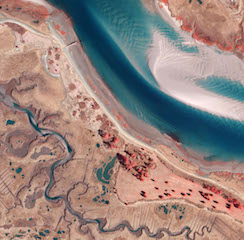New version of the I3S Community Standard, used for streaming large 3D datasets to desktop and mobile devices, improves performance and scalability with enhancements to 3D Object and Integrated Mesh layers

The Open Geospatial Consortium (OGC) seeks public comment on version 1.2 of the OGC Indexed 3d Scene Layer (I3S) and Scene Layer Package (*.slpk) Format Community Standard. Comments are due by July 16, 2020.
I3S enables the streaming and storage of arbitrarily large amounts of 3D geographic data. An I3S dataset, referred to as a Scene Layer, can consist of millions of discrete 3D objects with attributes, integrated surface meshes, symbolized points, or point cloud data covering vast geographic areas. Designed for performance and scalability, a scene layer enables the efficient encoding and transmission of geospatial content for an interactive visualization experience on web browsers, mobile, and desktop apps for both offline and online access.
On January 4, 2018, which coincided with a perigean spring high tide (Perigean tides occur when the moon is either new or full and closest to Earth), a single storm moved ice onto an area of salt marsh in Massachusetts from nearby creeks and bays, carrying the equivalent of more than 15 years’ worth of sediment onto the marshes. Also, prior to the event, there was a prolonged cold snap that lasted for more than a week when temperatures never climbed above 32 degrees.





